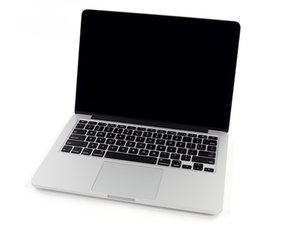Internal SSD not recognized and not working in 13" MacBook Pro Retina
Hello everybody!
I have a 13" Macbook Pro that is no longer under warranty and everything started fail after installing Mojave. I started getting kernel panic errors when you try to see your memory size from the Apple menu > About this Mac. After that the original SSD drive failed. The main problem was when I logged into the system, it was getting frozen out of no where after three minutes, independent from whatever you do on your system with spinning wheel and so on. The only solution was to do hard reset.
I wanted to format or to reinstall the system but the computer wasn't recognizing "Macintosh HD" so I failed to recover the system. Then went to Apple Store and they tried to format my system but they couldn't. They recommended me to change my drive, despite of getting no problem related with my hard drive from diagnostics.
After getting my system back from Genius guys, when I boot up, I saw the folder with the question mark. I could not even wipe the new drive in recovery mode with the disk utility because it would not show up. The only thing I see is "disk0" and under that, Mac OS X Base System.
Therefore, I bought a new Transcend JetDrive 850 and again the situation was the same, system doesn't recognize the new SSD either. I could not even wipe the new drive in recovery mode with the disk utility because it would not show up. The only thing I see is "disk0" and under that, Mac OS X Base System which I know is not my new SSD given the size. It does not show up no matter what I do. I checked that the SSD was in correctly etc. Again, I cannot get Disk Utility to recognize it so I can’t format and restore the OS.
What do I do to get my Mac to see the new SSD I have installed?
Would I even be able to get into the Disk Utility and recovery mode if this were an issue with the logic board or have I neglected something totally obvious here?
Thanks in advance for any advice!
Is this a good question?

 3
3  1
1 
 971
971
4 Comments
The same issue..however, with MULTIPLE MACs...2 iMacs, MacBook Air, and a MacBook Pro...Long story short. When ALL THE ISSUES impacted millions of Apple customers with the release, upgrade to OS High Sierra led many to be forced to use an external drive to upload the OS into their device. I had this issue as well and wasted time, the money I didn't have to simply have a functional computer...I too am no longer able to access the internal hard-drive- I now use an external hard drive to boot my Macs-I've researched everything & tried everything it seems- All to no avail..I was eventually able to mount int Hard drive on one but still can not make any changes due to permission issues...I have duplicate, triplicate apps, etc due to this problem. Most disturbing is the internal Hard drive memory size was sliced in half...I can not erase, adjust, remove, change... "partition/container" the OS X is located has "owners enabled" & can verify..but it is located inside the disc which I can not access...no permissions.
by OSCAR MIKE
Did you managed to solve the problem? I have the exact same situation as mentioned but with a 2015 MBP 15” and I don’t know what to do.
by Gábor Lant
Did you follow the steps I outlined in the answer? Who's SSD do you have a Samsung or a Toshiba drive?
by Dan
Unfortunately, I couldn’t solve the problem. My internal SSD doesn’t work. In the end I ordered an external Samsung SSD (512GB) and installed mojave into it and keep continue to use my pc with this way. However, when I launch my mac from external SSD, it can recognize it for 10 mins as “external” ssd then eject it automatically. I don’t know why, but mac works perfectly from the external SSD.
by Sarlken Konig